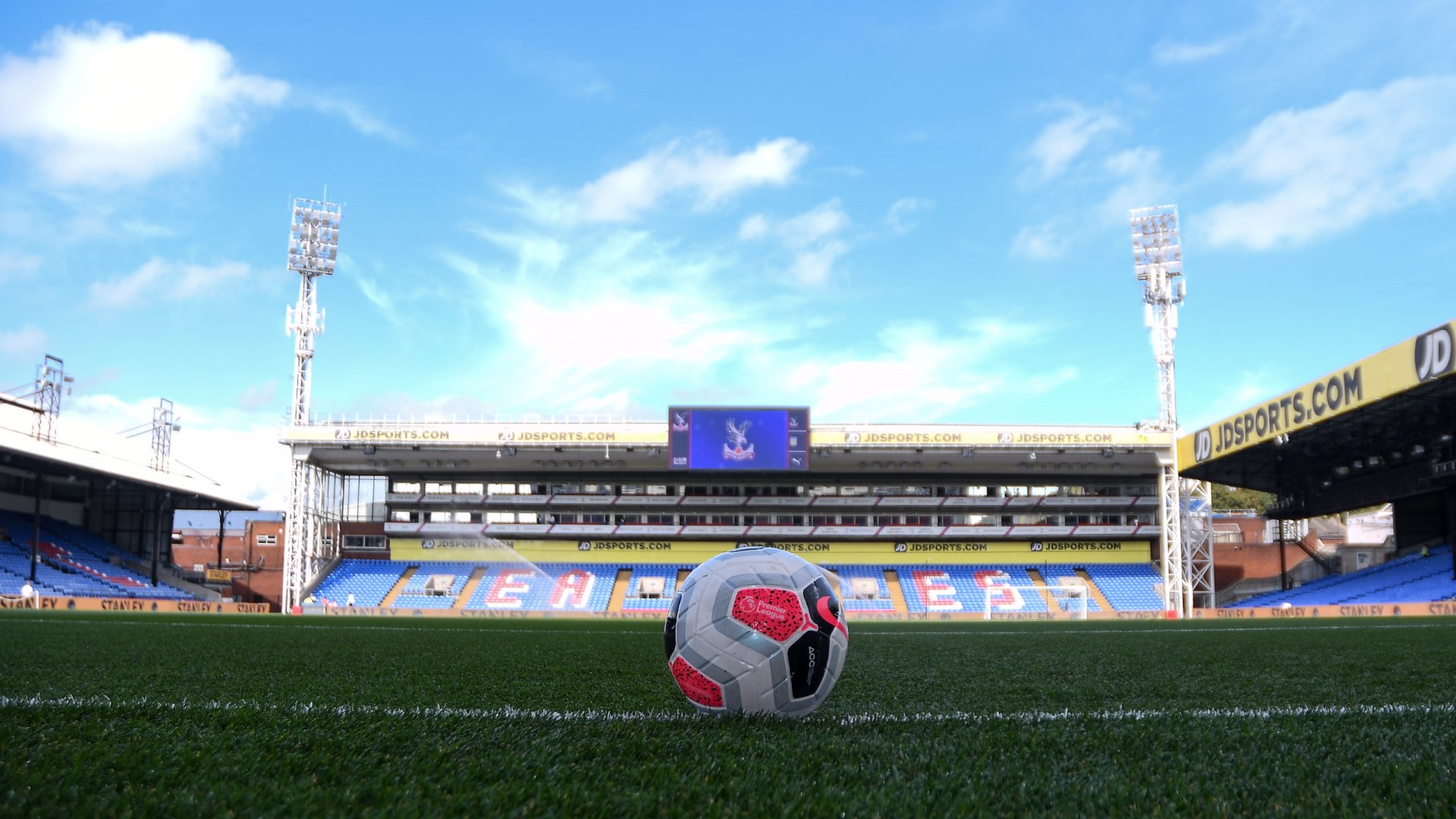Catch A game at Selhurst Park
Home to Crystal Palace FC since 1924, Selhurst Park has a capacity of 25,486 and while it’s not the biggest stadium in the Football League, it has a well-earned reputation for being one of the friendliest.
Highlights
- Grab a selfie on a match day or open day with Crystal Palace mascot Alice the Eagle
- Join in with the home fans on a matchday as they sing “Glad All Over” by the Dave Clarke Five, which is the club’s unofficial anthem
- Check out the stadium’s Main Stand, designed and built in 1924 by Archibald Leitch, the architect responsible for Fulham’s Craven Cottage
What to see and do
Go on a tour of Selhurst Park and find out more about it
During the tour, you’ll get to visit the dressing room so you can imagine yourself seconds away from running out onto the pitch. You also go into the press room and then take a walk along the side of the pitch.
Head to Fanzone for a fun family experience
Crystal Palace FC is known for its small and friendly atmosphere and this warm welcome is extended to families and younger football fans. The Fanzone is in the main car park, next to entrance 10 and the fun starts three hours before kick-off with a DJ, sports skills workshops, cheerleaders, and, of course, Alice the Eagle.
Pick up some CPFC strips and lots of other branded items at the gift shop
The gift shop has everything a Palace fan could ever need, from freezer mugs, clocks, home and away kits, books, and posters, as well as smaller items like phone cases, cards, cufflinks, and even a Crystal Palace Monopoly game.
Did you know? (4 Interesting facts)
- Selhurst Park has the dubious honor of hosting the lowest-ever attendance in the Premier League. On January 26, 1993, Palace played at home to Everton in front of 3,039 people. To make matters even worse, Everton won 3-1.
- There’s a small branch of Sainsbury’s supermarket in Selhurst Park, at the Whitehorse Lane corner.
- The stadium has hosted just one international game – England v Wales on March 1 1926. Wales won the game 3-1 in front of a crowd of 23,000 spectators.
- During the 1948 Summer Olympics, Selhurst Park hosted two games – Denmark v Egypt and Sweden v South Korea.
History
- 1922: Crystal Palace bought the land Selhurst Park sits on today from the Brighton Railway Company for £2,750. The land was originally a brickfield and it took two years for it to be transformed into a football stadium. The well-known football stadium architect Archibald Leitch designed the Main Stand.
- 1924: On August 30 of this year the stadium opened. Crystal Palace played The Wednesday (now known as Sheffield Wednesday) in front of a 25,000-strong crowd. This second-division match resulted in a 1-0 defeat for Palace in their new home.
- 1953: Selhurst Park got its first floodlights and to celebrate, the club invited Real Madrid to play a friendly. This April 18 match was the Galactico’s first-ever visit to London and they won 3-4 in front of a crowd of 24,740.
- 1969: Palace was promoted to Division One and in anticipation of bigger crowds, Chairman Arthur Wait started construction of a new stand and added a second tier to the Whitehorse Lane End.
- 1981: Crystal Palace sold some of the land around Whitehorse Lane Terrace to Sainsbury’s for £2 million in a bid to ease its financial burdens.
- 1985: Charlton Athletic moved into Selhurst Park to share the ground in what was the first stadium-sharing scheme in the English Football League. Wimbledon followed in 1991 after Charlton moved “home”.
- 1994: After the Taylor Report mandated that all top-flight stadiums had to be all-seaters, Crystal Palace renovated the rest of its terrace sections. This work added 48 new executive boxes above the Whitehorse Lane Terrace and a new two-tier Holmesdale Road Terrace.
Facilities and accessibility
Selhurst Park is wheelchair-accessible throughout and the stadium has 128 wheelchair spaces as well as 289 easy-access seats. There are ramps into the club’s main reception and also accessibility into the Fanzone next to Entrance 10.
All of the toilets in Selhurst Park are fully accessible and the stadium also has one full-sized accessible changing room and a second smaller changing room with an accessible toilet in.
For visitors with autism and sensory issues, there’s a sensory room so that users can move around and relax. This room has a TV to show the matches, but no view of the pitch. There’s a second sensory room with views of the pitch but it’s not available for all matches, so do check beforehand.
Selhurst Park is cashless and all its outlets accept contactless payments as well as Apple Pay and similar methods.
There’s a café in the stadium which offers some vegan options, as well as soft, hot and alcoholic drinks.
Assistance dogs are welcome throughout the stadium and there are water bowls available as well as exercise and toileting areas for them.
For people with hearing impairments, there are induction loops available, as well as headphones so people with visual impairments can listen to match commentaries.
The nearest train stations are Selhurst and Thornton Heath, which are both around 10 minutes’ walk from the stadium. Norwood Junction is also around 10 minutes’ walk away and there’s also the 468 bus from Elephant and Castle or the X68 bus from Russel Square. Both buses pass by the Whitehorse Lane end of the stadium.
